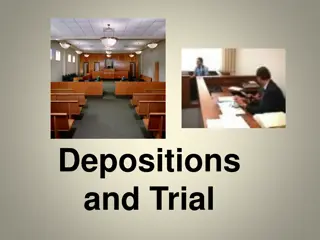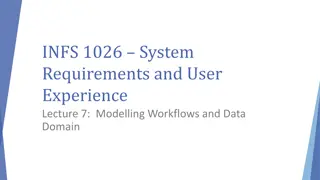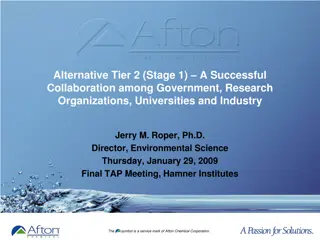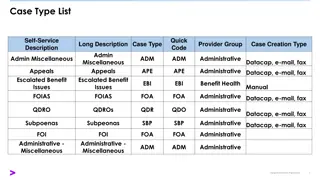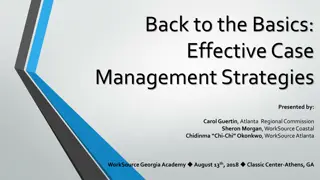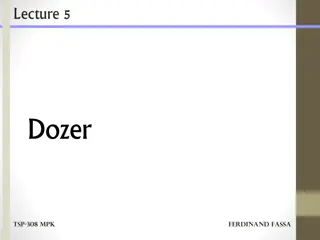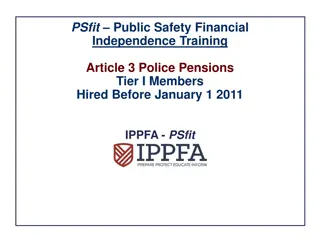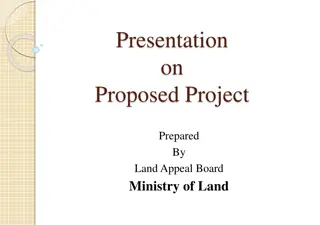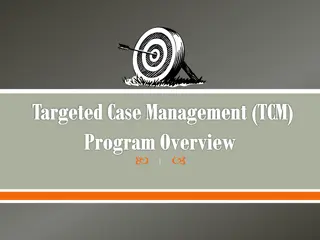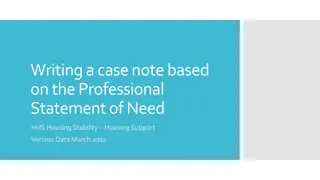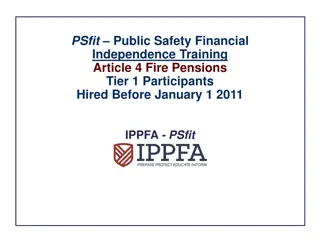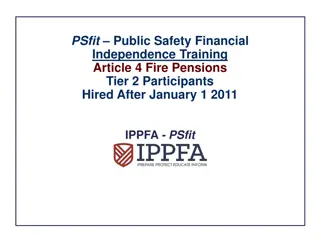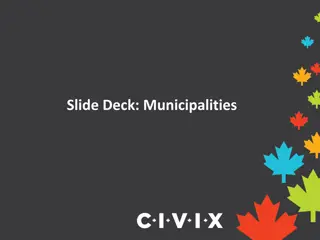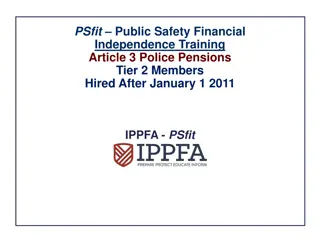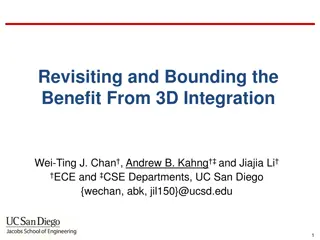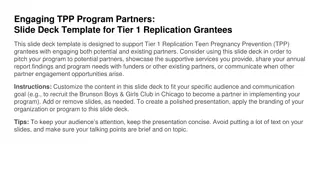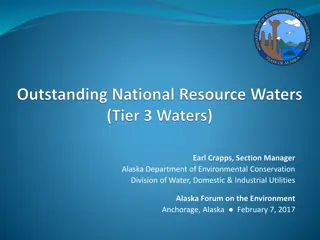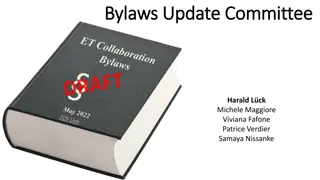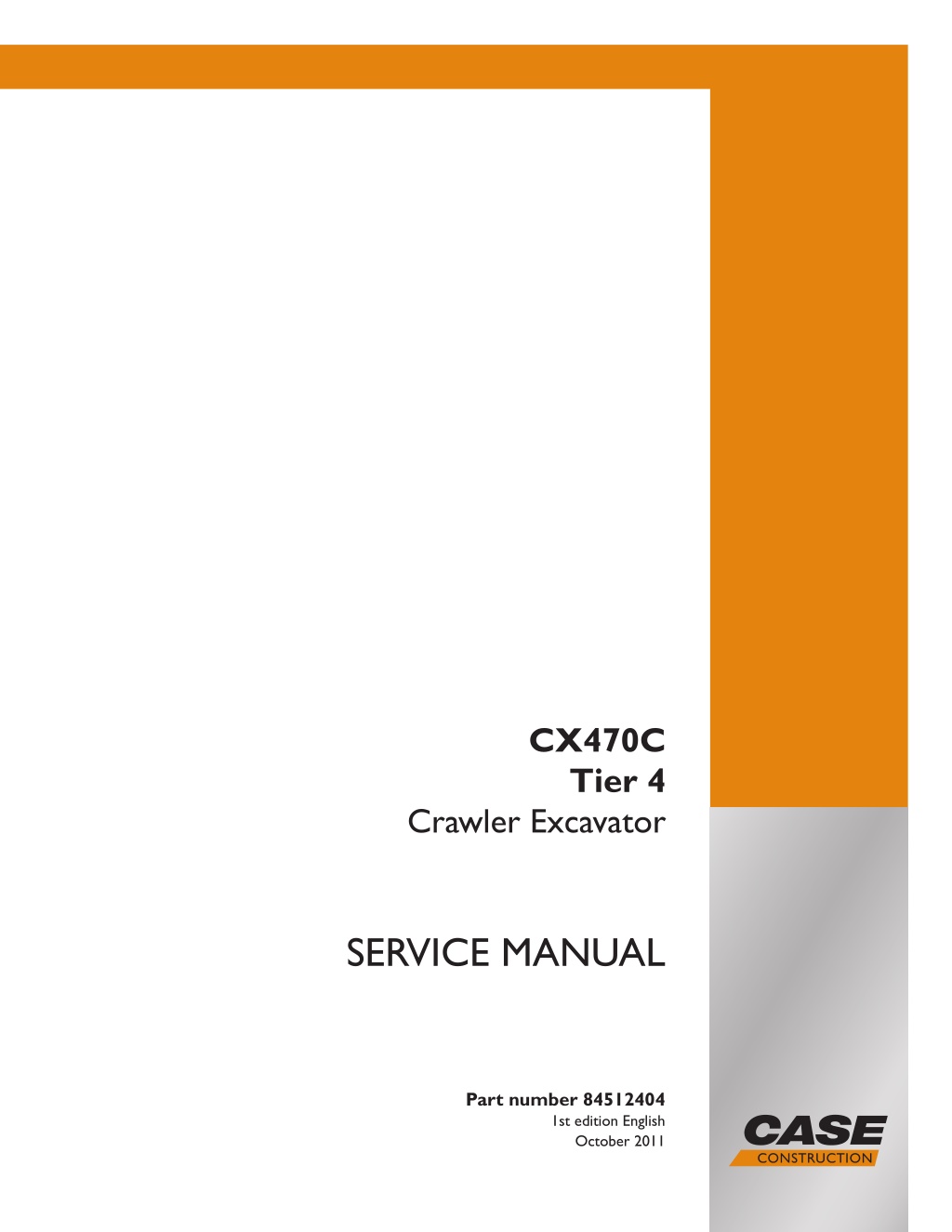
CASE CX470C Tier 4 Crawler Excavator Service Repair Manual Instant Download
Please open the website below to get the complete manualnn//
Download Presentation

Please find below an Image/Link to download the presentation.
The content on the website is provided AS IS for your information and personal use only. It may not be sold, licensed, or shared on other websites without obtaining consent from the author. Download presentation by click this link. If you encounter any issues during the download, it is possible that the publisher has removed the file from their server.
E N D
Presentation Transcript
CX470C Tier 4 Crawler Excavator SERVICE MANUAL Part number 84512404 1st edition English Printed in U.S.A. Copyright 2011 CNH America LLC. All Rights Reserved. Case is a registered trademark of CNH America LLC. Racine Wisconsin 53404 U.S.A. October 2011
Section 1001 Safety, general information and standard torque data 84512404 NA - September 2011
Safety, general information and standard torque data GENERAL INFORMATION CLEANING Clean all metal parts except bearings, in a suitable cleaning solvent or by steam cleaning. Do not use caustic soda for steam cleaning. After cleaning, dry and put oil on all parts. Clean oil passages with compressed air. Clean bearings in a suitable cleaning solvent, dry the bearings completely and put oil on the bearings. INSPECTION Check all parts when the parts are disassembled. Replace all parts that have wear or damage. Small scoring or grooves can be removed with a hone or crocus cloth. Complete a visual inspection for indications of wear, pitting and the replacement of parts necessary to prevent early failures. BEARINGS Check bearings for easy action. If bearings have a loose fit or rough action replace the bearing. Wash bearings with a suitable cleaning solvent and permit to air dry. DO NOT DRY BEARINGS WITH COMPRESSED AIR. NEEDLE BEARINGS Before you press needle bearings in a bore always remove any metal protrusions in the bore or edge of the bore. Before you press bearings into position put petroleum jelly on the inside and outside diameter of the bearings. GEARS Check all gears for wear and damage. Replace gears that have wear or damage. Oil seals, O-rings and gaskets. Always install new oil seals, O-rings and gaskets. Put petroleum jelly on seals and O-rings. SHAFTS Check all shafts that have wear or damage. Check the bearing and oil seal surfaces of the shafts for damage. SERVICE PARTS Always install genuine Case service parts. When ordering refer to the Parts Catalogue for the correct part number of the genuine Case replacement items. Failures due to the use of other than genuine Case replacement parts are not covered by warranty. LUBRICATION Only use the oils and lubricants specified in the Operator s or Service Manuals. Failures due to the use of non-specified oils and lubricants are not covered by warranty. 84512404 NA - September 2011 1001-3
https://www.ebooklibonline.com Hello dear friend! Thank you very much for reading. Enter the link into your browser. The full manual is available for immediate download. https://www.ebooklibonline.com
Safety, general information and standard torque data Safety This symbol means ATTENTION! BECOME ALERT! YOUR SAFETY IS INVOLVED. The message that follows the symbol contains important information about safety. Carefully read the message. Make sure you fully understand the causes of possible injury or death. To prevent injury always follow the Warning, Caution and Danger notes in this section and throughout the manual. Put the warning tag shown below on the key for the key switch when servicing or repairing the machine. One warning tag is supplied with each machine. Additional tags are available from your service parts supplier. WARNING Read the operator's manual to familiarize yourself with the correct control functions. WARNING Operate the machine and equipment controls from the seat position only. Any other method could result in serious injury. WARNING This is a one man machine, no riders allowed. WARNING Before starting engine, study Operator s Manual safety messages. Read all safety signs on machine. Clear the area of other persons. Learn and practice safe use of controls before operating. It is your responsibility to understand and follow manufacturers instructions on machine operation, ser- vice and to observe pertinent laws and regulations. Operator's and Service Manuals may be obtained from your CASE dealer. WARNING If you wear clothing that is too loose or do not use the correct safety equipment for your job, you can be injured. Always wear clothing that will not catch on objects. Extra safety equipment that can be required includes hard hat, safety shoes, ear protection, eye or face protection, heavy gloves and reflector clothing. WARNING When working in the area of the fan belt with the engine running, avoid loose clothing if possible, and use extreme caution. WARNING When doing checks and tests on the equipment hydraulics, follow the procedures as they are written. DO NOT change the procedure. WARNING When putting the hydraulic cylinders on this machine through the necessary cycles to check operation or to remove air from a circuit, make sure all people are out of the way. WARNING Use insulated gloves or mittens when working with hot parts. 84512404 NA - September 2011 1001-4
Safety, general information and standard torque data WARNING Lower all attachments to the ground or use stands to safely support the attachments before you do any maintenance or service. WARNING Pin sized and smaller streams of hydraulic oil under pressure can penetrate the skin and result in serious infection. If hydraulic oil under pressure does penetrate the skin, seek medical treatment immediately. Maintain all hoses and tubes in good condition. Make sure all connections are tight. Make a replacement of any tube or hose that is damaged or thought to be damaged. DO NOT use your hand to check for leaks, use a piece of cardboard or wood. WARNING When removing hardened pins such as a pivot pin, or a hardened shaft, use a soft head (brass or bronze) hammer or use a driver made from brass or bronze and a steel head hammer. WARNING When using a hammer to remove and install pivot pins or separate parts using compressed air or using a grinder, wear eye protection that completely encloses the eyes (approved goggles or other approved eye protectors). WARNING Use suitable floor (service) jacks or chain hoist to raise wheels or tracks off the floor. Always block machine in place with suitable safety stands. WARNING When servicing or repairing the machine, keep the shop floor and operator's compartment and steps free of oil, water, grease, tools, etc. Use an oil absorbing material and/or shop cloths as required. Use safe practices at all times. WARNING Some components of this machine are very heavy. Use suitable lifting equipment or additional help as instructed in this Service Manual. WARNING Engine exhaust fumes can cause death. If it is necessary to start the engine in a closed place, remove the exhaust fumes from the area with an exhaust pipe extension. Open the doors and get outside air into the area. WARNING When the battery electrolyte is frozen, the battery can explode if (1), you try to charge the battery, or (2), you try to jump start and run the engine. To prevent the battery electrolyte from freezing, try to keep the battery at full charge. If you do not follow these instructions, you or others in the area can be injured. 84512404 NA - September 2011 1001-5
Section 2000 Removal and Installation of Engine Assembly 84512404 NA - September 2011
Removal and Installation of Engine Assembly Removal of Engine Assembly WARNING 1. Drain the engine oil.(For details, see "Engine Oil Replacing".) Drain the coolant from the radiator.(For details, see "Removal and Installation of Radiator".) Remove the engine hood.(For details, see "Re- moval and Installation of Engine Hood".) Remove the hydraulic pump.(For details, see "Re- moval and Installation of Hydraulic Pump".) Remove the muffler.(For details, see "Removal and Installation of Muffler".) Use a wrench (7 mm) to loosen the hose band (1) ontheradiator, andthenremovetheupperhose(2). Keep away from fire. Be sure to release hydraulic pressure before beginning work. The air conditioner circuit is filled with high- pressure gas, so there is the danger of gas spraying out when loosening lines. Do not use open flames and do not allow sparks near the battery. 2. 3. 4. 5. CAUTION 6. Be sure to stop the engine before beginning work. Be sure to inspect the wire rope and other lifting equipment before beginning work. Do not stand or pass under the suspended load. Items to prepare Wrenches (7 mm, 8 mm, 13 mm, 17 mm, 19 mm, 36 mm) Box wrench (46 mm) Shackle (with the required lifting capacity) x 2 Wire ropes (with the required breaking load) Liftcrane (with the required lifting capacity) Marking pen Cap Plug Waste oil can Rag Cleaning fluid Wood planks, etc. 7. Use a wrench (8 mm) to loosen the hose band (1) on the inter cooler, and then remove the hose (2). Use caps to cover the lines and hoses to prevent the entry of water, dust or dirt. 84512404 NA - September 2011 2000-3
Removal and Installation of Engine Assembly 8. Remove the hose band (1), and then remove the heater hose (2). Attach caps or plugs to the engine and hoses to prevent any entry of water, dust or dirt. Tightening torque for bolt installation: 19.6 - 24.5 N m 11. Use a wrench (19 mm) to remove the 11 bolts (1), and then remove the under cover (2). Use caution when removing as the parts are heavy. Tightening torque for bolt installation: 63.7 - 73.5 N m 9. Use a wrench (7 mm) to loosen the hose band (1) of the radiator, and then remove the lower hose (2). Use caps to cover the radiator and hoses to pre- vent the entry of water, dust or dirt. Before removing the radiator hoses, completely drain the coolant. 12. Prepare the waste oil can (1). Drain the engine oil before removing the engine oil hose. 10. Use a wrench (13 mm) to loosen the line bolts (1) in 2 locations, and then remove the 2 lines (2) and (3) from the compressor. 13. Use a wrench (36 mm) to remove the 2 engine oil remote hoses (1). Mark the engine and hoses so that the connectors match at the time of assembly. Attach caps or plugs to the engine and hoses to prevent any entry of water, dust or dirt. Always remove the low-pressure (suction side) line (2) first. Attach caps or plugs to the compressor and lines to prevent any entry of water, dust or dirt. 84512404 NA - September 2011 2000-4
Removal and Installation of Engine Assembly Clean the engine and hoses by spraying them with a parts cleaner to prevent scratches and pre- vent dirt from accumulating on the connectors. 16. Use a wrench (8 mm) to remove the 2 nuts (1), and then remove the wiring (2) from the starter motor. 17. Remove the hose band (1), and then remove the fuel hose (2). 14. Use a wrench (17 mm) to remove the bolt (1), and then remove the battery cable (2) on the negative side. Attach caps or plugs to the engine and hoses to prevent any entry of water, dust or dirt. When removing the terminal and harness, secure them so that they do not interfere with the frame. Also, cover with a rubber cap to protect against sparks. 18. Use a wrench (36 mm) to remove the 2 engine re- mote hoses (1). 15. Use a wrench (17 mm) to remove the 5 bolts (1), and then remove the under cover (2). Tightening torque for bolt installation: 63.7 - 73.5 N m 84512404 NA - September 2011 2000-5
Removal and Installation of Engine Assembly 19. Remove the hose band (1) and then remove the engine remote sub hose (2). 21. Remove the connectors (1) in the box. Wraptheremovedconnectorsinplasticaftertying them together to prevent any entry of water, dust or dirt. 20. Use a wrench (13 mm) to remove the 4 bolts (1), and then remove the box cover (2). 22. Use a wrench (7 mm) to loosen the hose band (1), and then remove the air hose (2). Use caps to cover the lines and hoses to prevent any entry of water, dust or dirt. 23. Use a wrench (8 mm) to loosen the hose band (1), and then remove the air hose (2). Use caps to cover the lines and hoses to prevent any entry of water, dust or dirt. Tightening torque for bolt installation: 8.8 - 9.8 N m 84512404 NA - September 2011 2000-6
Removal and Installation of Engine Assembly 24. Useawrench(36mm)toremovethehydraulichose (1). 27. Install the 2 shackles (1), and then use the wire rope (2) and liftcrane to secure the engine main unit. 25. Remove the connectors (1) from the alternator. 26. Remove the cap (1), use the wrench (10 mm) to remove the nut (2), and then remove the alternator wiring (3). 84512404 NA - September 2011 2000-7
Removal and Installation of Engine Assembly 28. Use a box wrench (46 mm) to remove the 4 bolts (1) from the mount. Tightening torque for bolt installation: 843.4 - 980.7 N m 29. Use the wire rope (1) and liftcrane to lift the engine main unit. Thoroughly check that the location is safe before lowering the engine on wood planks, etc. 84512404 NA - September 2011 2000-8
Removal and Installation of Engine Assembly Installation of Engine Assembly 2. Run the engine at no-load idling and check for any water or oil leaks. Attach the hydraulic pump, covers, and counter- weight. For details, see the individual explanations for each procedure. 1. To install the engine, perform the reverse of the re- moval procedure. Tighten bolts being installed to the specified torque. For bolts for which the torque is not specified, see "Standard Torque Data for Cap Screws and Nuts". After installing the engine, resupply coolant and en- gine oil, perform fuel line air bleeding, and perform filling for the air conditioner gas. For details, see the individual explanations for each procedure. 3. 84512404 NA - September 2011 2000-9
Removal and installation of the fuel cooler engine inter-cooler radiator and oil cooler Removal and Installation of Fuel Cooler Removal of Fuel Cooler 1. Mark the fuel cooler (5) and hoses (1) (2) so that the connectors match at the time of assembly. CAUTION Remove the wire band (6). Use pliers to remove the hose bands (3) (4), and then remove the hoses. Fuel will spill out, so place a drip pan directly be- low the area. Install caps or plugs to the fuel cooler and hoses to prevent any entry of water, dust or dirt. Be sure to stop the engine before beginning work. As the fuel hose will be removed, strictly pro- hibit open flames. Items to prepare Wrenches (12 mm) Screwdriver Pliers Marking pen Cap Plug Rag Cleaning fluid Drip pan 84512404 NA - September 2011 2001-3
Removal and installation of the fuel cooler engine inter-cooler radiator and oil cooler Removal and Installation of Engine Inter Cooler 2. Use a wrench (12 mm) to remove the 4 bolts (1), and then remove the fuel cooler (2). CAUTION Be sure to stop the engine before beginning work. As the fuel hose will be removed, strictly pro- hibit open flames. Items to prepare Wrenches (8 mm, 13 mm) Flathead screwdriver Cap Rag Cleaning fluid Removal of Inter Cooler 1. Remove the fuel cooler.(For details, see "Removal and Installation of Fuel Cooler".) Useawrench(13mm)toremovethe4bolts(1), and then remove the bracket (2) from the fuel cooler. Installation of Fuel Cooler Perform the reverse of the removal procedure. After connecting the hoses, carefully check for any fuel leaks. When installing the bolts, tighten them to the specified torque. If the torque is not specified for a bolt or other part, see the "Standard Torque Data for Cap Screws and Nuts". 2. Use a wrench (8 mm) or flathead screwdriver to loosen the hose bands (1) in the 2 locations, and then remove the 2 hoses (2) and (3). Use caps to cover the inter cooler and hoses to pre- vent the entry of water, dust or dirt. 84512404 NA - September 2011 2001-4
Removal and installation of the fuel cooler engine inter-cooler radiator and oil cooler Installation of Inter Cooler 3. Use a wrench (13 mm) to remove the 4 bolts (1), and then remove the inter cooler (2). To install, perform the reverse of the removal procedure. Check for any air leaks. Tighten bolts being installed to the specified torque. For bolts for which the torque is not specified, see "Stan- dard Torque Data for Cap Screws and Nuts". 84512404 NA - September 2011 2001-5
Removal and installation of the fuel cooler engine inter-cooler radiator and oil cooler Removal and Installation of Radiator Removal of Radiator 1. Use a wrench (19 mm) to remove the 5 bolts (1), and then remove the under cover (2). Job code 10406AO10 WARNING Do not remove the radiator cap when the ra- diator coolant temperature is high. Hot liquid could spray out. CAUTION Be sure to release hydraulic pressure before beginning work. Be sure to stop the engine before beginning work. Be sure to inspect the wire rope and other lifting equipment before beginning work. Do not stand or pass under the suspended load. 2. Install the drain hose (1), and then prepare the drain tank (2). Items to prepare Wrenches (7 mm, 8 mm, 13 mm, 19 mm) Box wrench (17 mm) Pliers Shackles (with the required lifting capacity) 2 Wire rope (with the required breaking load) Liftcrane (with the required lifting capacity) Cap Plug Drain tank Drain hose Rag Cleaning fluid Wood planks, etc. 84512404 NA - September 2011 2001-6
Removal and installation of the fuel cooler engine inter-cooler radiator and oil cooler 3. To make it easier to drain the coolant, remove the radiator cap (1). 6. Use a wrench (19 mm) to remove the 11 bolts (1), and then remove the brackets (2) (3). 4. Loosen the drain plug (1), and then drain the coolant. 7. Use a wrench (19 mm) to remove the 7 bolts (1), and then remove the brackets (2) (3). 5. Use a wrench (8 mm) to loosen the hose band (1), and then remove the hose (2). 8. Use a wrench (7 mm) to loosen the hose band (1), and then remove the upper hose (2) and lower hose (3) from the radiator. Tightening torque for band (1) installation: 8.8 - 9.8 N m Use caps to cover the radiator and hoses to pre- vent any entry of water, dust or dirt. Tightening torque for band (1) installation: 4.9 - 5.9 N m 84512404 NA - September 2011 2001-7
Removal and installation of the fuel cooler engine inter-cooler radiator and oil cooler 10. Loosen the hose band (2), and then remove the hose (1) from the radiator cap. Install caps or plugs to the hoses to prevent any entry of water, dust or dirt. 11. Use a wrench (13 mm) to remove the 4 bolts (1). 9. Remove the drain plug (1), loosen the hose band (2), and then remove the hose (3). 12. Remove the fan guard (1). 84512404 NA - September 2011 2001-8
Removal and installation of the fuel cooler engine inter-cooler radiator and oil cooler 13. Use a box wrench (17 mm) to remove the 8 bolts (2) from the fan shroud (1), and then move the fan shroud (1) towards the engine. 15. Install the 2 shackles (1) to the top of the radiator, and then use the wire rope (2) and liftcrane to lift the radiator. 14. Remove the 2 butterfly bolts (1), and then remove the front anti-insect net (2). 16. Lift until the fixtures (1) at the bottom of the radiator become disconnected. 84512404 NA - September 2011 2001-9
Removal and installation of the fuel cooler engine inter-cooler radiator and oil cooler Installation of radiator 17. Thoroughly check that the location is safe before lowering the radiator on square wooden piece. When laying down the radiator, be careful not to bend or crush the bottom fixtures (1). To install, perform the reverse of the removal procedure. Tighten bolts being installed to the specified torque. For bolts for which the torque is not specified, see "Stan- dard Torque Data for Cap Screws and Nuts". For details on the method for coolant filling, see the (Ser- vice Text Procedures for Replacing Consumable Parts Radiator Coolant Replacement). Coolant capacity is 18.6 L. Finally, check that the level of coolant is correct. 84512404 NA - September 2011 2001-10
Removal and installation of the fuel cooler engine inter-cooler radiator and oil cooler Removal and Installation of Oil Cooler Removal of oil cooler 1. Drain the hydraulic oil from the hydraulic oil tank. See "Draining Oil from Hydraulic Oil Tank" for de- tails of the procedure. Use a wrench (19 mm) to remove the 5 bolts (1), and then remove the under cover (2). WARNING 2. Keep away from fire. CAUTION Be sure to stop the engine before beginning work. Be sure to inspect the wire rope and other lifting equipment before beginning work. Do not stand or pass under the suspended load. Items to prepare Wrenches (17 mm, 19 mm) Hexagon wrench (10 mm) Pliers Screwdriver Eyebolts (M12 x 2) Shackle (with the required lifting capacity) x 2 Wire rope (with the required breaking load) Liftcrane (with the required lifting capacity) Caps Waste oil can Rag Cleaning fluid Wood planks, etc. 3. Prepare the waste oil can (1). 4. Remove the 4 butterfly bolts (1), and then remove the anti-insect net (2). 84512404 NA - September 2011 2001-11
Removal and installation of the fuel cooler engine inter-cooler radiator and oil cooler 5. Use a wrench (19 mm) to remove the 7 bolts (1) and bracket (2), and then remove the seal cushion. 6. Use a hexagon wrench (10 mm) to remove the 2 upper hexagon socket head bolts (6) and 2 lower bolts (6), and then remove the lines (7) and (8). Use caps to cover the oil cooler and lines to pre- vent the entry of water, dust or dirt. 7. Use a wrench (13 mm) to remove the 5 bolts (1). 84512404 NA - September 2011 2001-12
Suggest: If the above button click is invalid. Please download this document first, and then click the above link to download the complete manual. Thank you so much for reading
Removal and installation of the fuel cooler engine inter-cooler radiator and oil cooler 8. Install the 2 eyebolts (M12) (10) on the top of the oil cooler. 10. Thoroughly check that the location is safe before lowering the oil cooler on wood planks, etc. Fully tighten the eyebolts, and then loosen them by a half turn. 9. Install the 2 shackles (11) to the eyebolts, and then use the wire rope (12) and liftcrane to lift the oil cooler main unit. 84512404 NA - September 2011 2001-13
https://www.ebooklibonline.com Hello dear friend! Thank you very much for reading. Enter the link into your browser. The full manual is available for immediate download. https://www.ebooklibonline.com


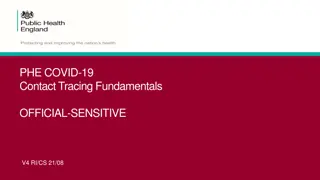
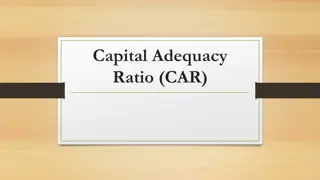
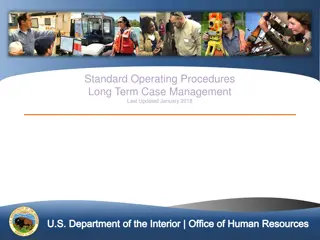


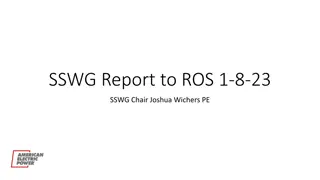
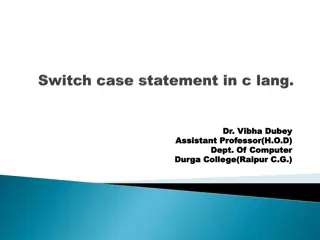
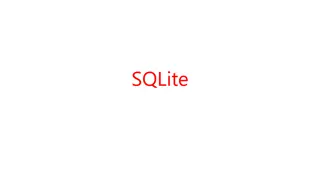


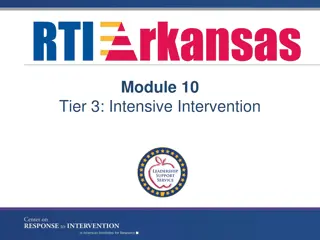
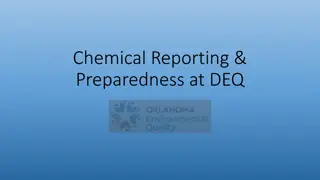
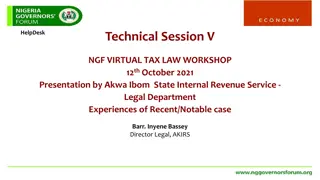

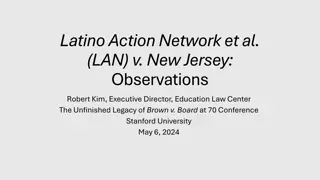
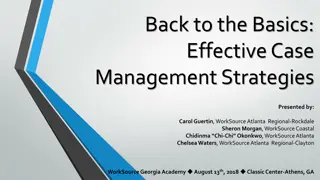

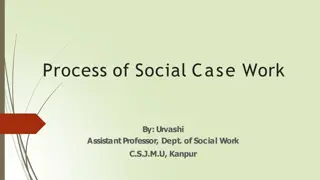
![Comprehensive Case Study on [Insert Case Title Here]](/thumb/159705/comprehensive-case-study-on-insert-case-title-here.jpg)

